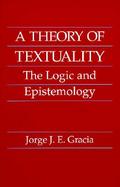A Theory of Textuality the Logic and Epistemology
- Binding: Paperback
- Publisher: State Univ of New York Pr
- Publish date: 07/01/1995
Product notice
Returnable at the third party seller's discretion and may come without consumable supplements like access codes, CD's, or workbooks.
| Seller | Condition | Comments | Price |
|
Wonder Book - Member ABAA/ILAB
|
Good |
$23.28
|
|
Ergodebooks
|
Good |
$25.27
|
|
Ergodebooks
|
New |
$49.26
|
|
GridFreed
|
New |
$124.97
|

Please Wait

